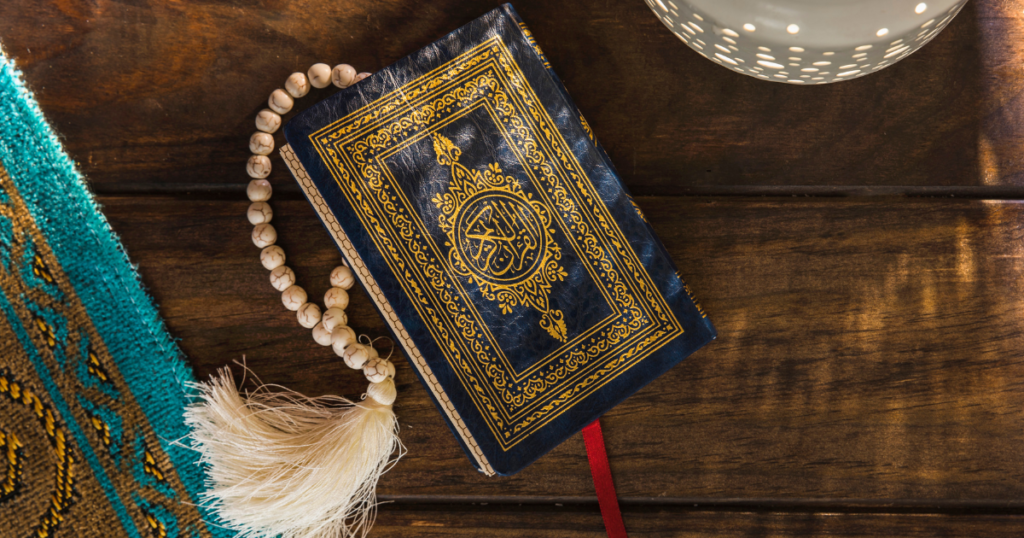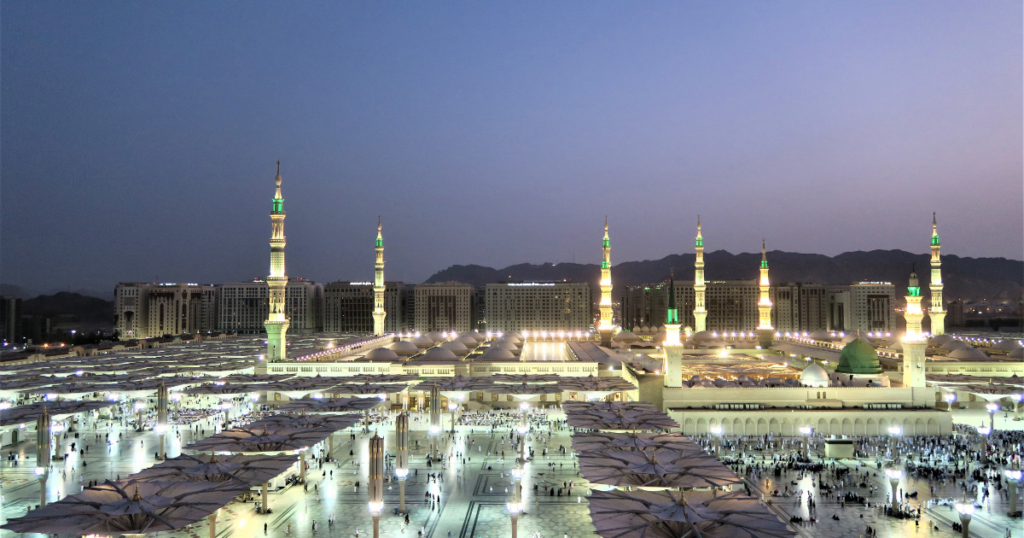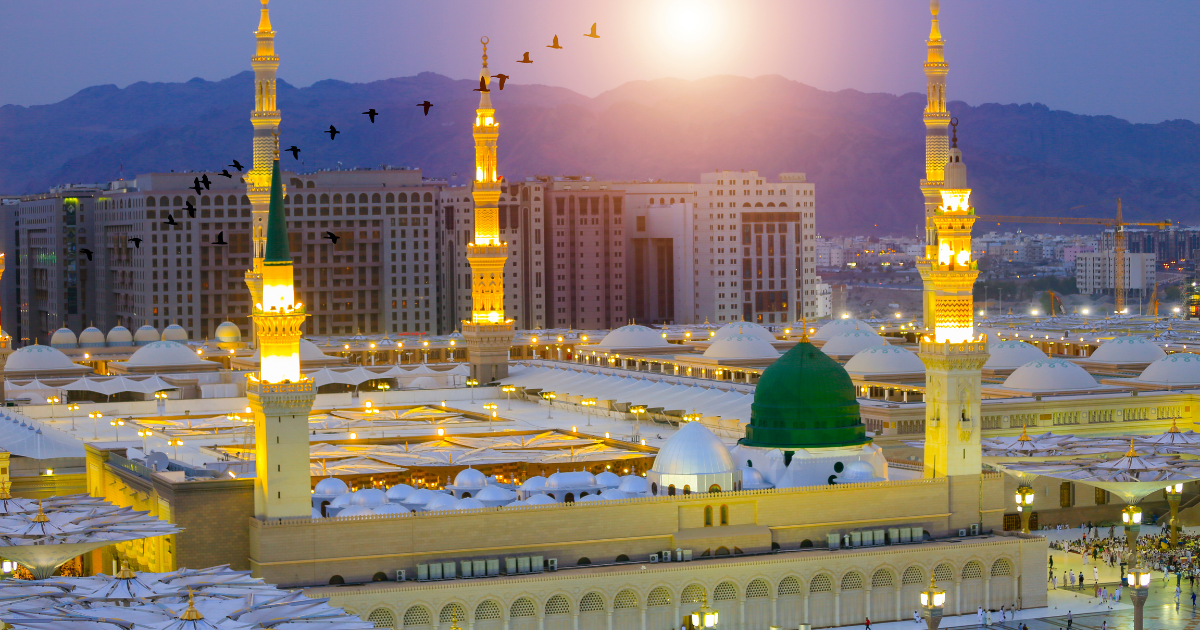Early Life: A Childhood Marked by Loss (570 CE)
Prophet Muhammad (peace be upon him), the most influential personality in history and the last Prophet of Muslims, was born around 570 CE into the Quraysh tribe in Mecca, a prominent trade center in present-day Saudi Arabia. Orphaned at a young age, his life was marked by a series of losses that profoundly influenced his character and destiny.
Even before his birth, tragedy struck. His father, Abdullah, passed away just a few months prior. Holding a newborn in her arms, Muhammad’s mother, Amina, faced the daunting task of raising a child alone. Sadly, she too passed away when Muhammad (PBUH) was only six years old. The responsibility then rested on his grandfather, Abd al-Muttalib, who lovingly cared for him until his own death two years later.
Left with no immediate family, Muhammad (PBUH) found refuge with his uncle, Abu Talib. Despite their own financial hardships, Abu Talib and his wife Khadija bint Khuwaylid raised Muhammad (PBUH) with love and compassion.
A Life of Integrity and Trade: Earning the Title “al-Amin” (570-610 CE)
Despite the hardships of his childhood, Muhammad (PBUH) flourished into a young man known for his honesty, trustworthiness, and exemplary character. He was bestowed with the nickname “al-Amin,” meaning “the truthful,” a testament to his impeccable reputation.
Muhammad (PBUH) chose a career in trade, traveling the Arabian Peninsula extensively. These journeys acquainted him with the social and religious landscape of the region, where polytheism and tribal rivalries were widespread. He witnessed firsthand the inequalities and injustices that afflicted society.
A Loving Marriage and a Respected Merchant: Building a Life with Khadija (595-610 CE)
At the age of 25, Muhammad (PBUH) entered into marriage with Khadija, a prosperous and successful businesswoman. Their partnership was built on mutual respect and love. Khadija recognized Muhammad’s (PBUH) exceptional qualities and became his first follower when he commenced receiving revelations later in life.
Their marriage ensured financial security and fostered a loving and supportive environment. Together, they had six children, including two sons who passed away at a young age and four daughters who played significant roles in the early Muslim community. Khadija (RA) remained a steadfast pillar of strength throughout his life, especially during the difficult years of persecution in Mecca.
The First Revelation and The Call to Prophethood (610 CE)

In 610 CE, at the age of 40, Muhammad (peace be upon him) experienced a pivotal moment that would change the course of history. While meditating in a cave on Mount Hira, he received a revelation from the Angel Gabriel, who commanded him to “recite” (Iqra).
This marked the commencement of the Quran’s revelation, believed by Muslims to be the literal word of God (Allah). It also marked the beginning of his prophethood. He was entrusted with the message of Islam, emphasizing the oneness of God, righteous living, social justice, and the importance of helping the less fortunate.
Preaching Islam in Mecca: Facing Opposition and Persecution (610-622 CE)

Muhammad (PBUH) began preaching Islam in Mecca, urging his people to abandon idol worship and embrace monotheism. His message found resonance among those seeking a fairer and more equitable society. However, the Meccan elite, whose power and wealth were intertwined with traditional polytheistic practices, perceived Islam as a threat.
The ruling elite, led by Abu Lahab, a prominent figure in the Quraysh tribe, began persecuting Muhammad (PBUH) and his followers. They faced social ostracization, economic boycotts, and even physical violence. Despite these hardships, Muhammad (peace be upon him) remained resolute in his mission, preaching with unyielding conviction and compassion.
Discover more life stories and remarkable journeys in our biography collection.
The Night Journey and Isra: A Miraculous Confirmation of Faith (621 CE)
According to Islamic tradition, Muhammad (peace be upon him) experienced a miraculous night journey (Isra) from Mecca to Jerusalem, where he ascended to heaven (Miraj) in a single night. This extraordinary event further solidified his faith and served as a confirmation of his prophethood.
The Night Journey and Isra hold immense significance in Islam. This event is seen as a confirmation of his prophethood and a connection to previous prophets like Ibrahim and Musa.
The Hijrah: Migration to Medina (622 CE)
Facing increasing persecution in Mecca, Muhammad (peace be upon him) and his followers embarked on a historic migration (Hijrah) to Medina in 622 CE. This pivotal event marks the beginning of the Islamic calendar. In Medina, he established the first Muslim community (Ummah) and gained the loyalty of the local tribes.
Building the Ummah in Medina (622-630 CE)

The Prophet (PBUH) established a mosque in Medina, a center for worship, education, and community gatherings. Additionally, he formed a pact (Ummah) that brought together Muslims and Jews of Medina, laying the foundation for an inclusive and cohesive society.
Military Struggles and the Defense of Faith (624-627 CE)
Life in Medina presented its share of challenges. Tensions escalated with the Meccan leadership, who refused to accept the growing influence of Islam. Consequently, a series of military conflicts ensued, including the battles of Badr and Uhud. Despite being outnumbered, the Muslims, under the Prophet’s (peace be upon him) leadership, emerged victorious in some key battles, gradually gaining strength and consolidating their position in Medina.
The Treaty of Hudaybiyyah (628 CE)
After a tense standoff, the Prophet (peace be upon him) signed a temporary truce (Hudaybiyyah) with the Meccans. This treaty aimed to decrease tension between the two cities, Mecca and Medina, and affirmed peace for 10 years. Though initially perceived as a setback, this treaty provided Muslims with an opportunity to spread their message and consolidate their strength.
The Conquest of Mecca and Unification of Arabia (630 CE)
In 630 CE, Muslims peacefully entered Mecca, securing a bloodless victory. The Kaaba, the pagan sanctuary, was cleansed of idols and rededicated to the worship of Allah. This marked a pivotal moment in Arab history, paving the way for the unification of Arabia under Islam.
The Farewell Pilgrimage and Final Years (632 CE)

In 632 CE, Prophet Muhammad (peace be upon him) embarked on his final pilgrimage (Hajj) to Mecca, establishing guidelines for the Hajj pilgrimage that Muslims observe to this day. Shortly after returning to Medina, he fell ill and passed away at the age of 63. His death left a deep void in the Muslim community, but his legacy as a prophet, social reformer, and political leader continues to inspire millions of people worldwide.
Legacy
Prophet Muhammad (PBUH) is revered by Muslims as the last prophet and messenger of God. His life and teachings have profoundly impacted the world. Islam, the religion he propagated, has flourished into a major world religion with over 2 billion followers. He left behind a community bound by faith and guided by his teachings, which encompass every facet of life, from spirituality and morality to governance and social justice. His exemplary character, compassion, and devotion to God serve as a timeless example for humanity to follow.


